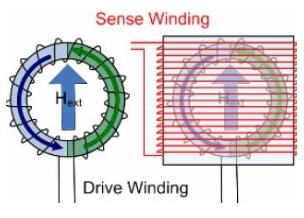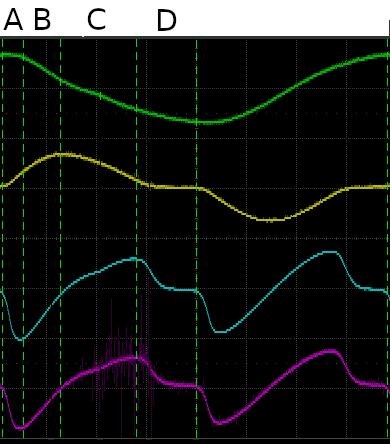On the heels of my Fringe's some coils buck and some coils don't thread, and after a decent amount of reading, videos, and thinking, I'm finding I should probably dive a bit deeper into understanding the A vector potential, with the addition of the rotating magnetic field.
There seem to be a lot of devices which mention a wind up effect, or gyroscopic effect, etc. And a bold assumption of mine, I'm thinking that even the motor or transformer type devices that might not use a rotating magnetic field, work on the same process as those that do use a rotating magnetic field. Maybe they do all have a rotating magnetic field? Time will tell.
Chris's experiments with the A vector potential A Vector Potential
The same setup with the rotating magnetic field here:
For example Akula has a video here
- 2:02 He talks about the electromagnetic field swirling.
- 4:15 He mentions the system automatically adjusts to the load, getting stronger and stronger (building up), and reaches a limit for that given load.
- 6:10 He connects the bulb and as the voltage goes up, he uses the words "the system accelerates".
- 6:40 "and so now the acceleration of the magnetic field is underway, rotating it"
- 8:15 again "...it can spin up this magnetic field…". And other places in the video. Good video, watch the whole thing, with captions on. And also this next one.
Second Akula video, which Chris if I'm not mistaken, this one is not on the AkulaVids list, but this is a good one.
- 1.31 Talking about the principle of operation "one of the principles that I use in the work of all these devices…". "... by far do not differ from the installation that I did for…" lists different versions, 20W, 1KW, 30KW, etc. All the same principles.
These devices of Akula look exactly like the device of Steven Mark. Especially the second device he shows in this video, where he uses the magnets alone to start it.
I assume everyone has heard Steven Mark talk about the gyroscopic effect, but here he also talks about the wind up/down effect.
- 2:20 Turns the device on with a magnet alone.
- 2:50 He states if you remove the magnet the voltage starts to come down, there is a frequency pattern set up and it takes a while to wind down, similar to that of a jet turbine.
- 3:15 Talks about the device having vibrations, etc.
I have no idea why in the world the device would turn off if you turn it upside down, that doesn't make sense to me, maybe someday it will.
Anyway, I know there are many other inventors that use this same principle. I won't name them all here. I'll probably start with small experiments with the Magnetic Induction Compass, and from there venture on to the rotating magnetic field setup that Chris has on the above mentioned hyiq.org page. And hopefully get a better picture of what is going on in the coils.
Not sure when I'll get started as I might have to order some parts and I have a small trip back to California soon to see family. But this is the direction I'll be heading with experiments. At some point I'll pick at the YoElMiCrO and Akula stuff, but that will probably be a different thread when I'm done with this one.
If I'm heading off in the wrong direction please let me know before I start winding coils! 😁
Back soon, hopefully, with something to share!
Marcel





























